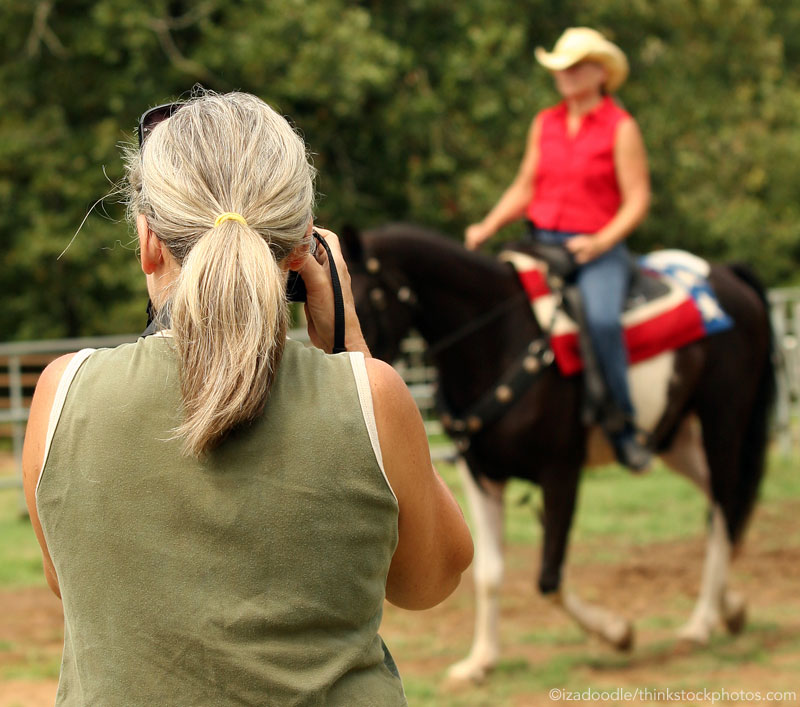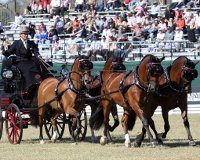It’s helpful to take video of horse show classes, perhaps to preserve the memory of an important day, happy time, or maybe to analyze later as a teaching tool. Videos can help us figure out where our riding skills can improve. Horse show videos can also be helpful to have if you’re trying to sell or lease a horse.
Keep it steady
It sounds like a cliché—like home movie advice left over from the days of Danny Tanner’s giant shoulder-mounted camcorder—but keeping your camera steady really is one of the most important things you can do to improve your horse show videos. Shaky videos are very tiring to watch, and the emphasis becomes directed at the poor filming rather than on the horse and rider. You don’t necessarily need a tripod, just concentrate on keeping your camera steady, and pan smoothly with the horse. Try to keep him in the same place on the screen, and your videos will become a lot more enjoyable to watch.
Actually pay attention
Sometimes we try to watch things with our own eyes and film them at the same time, without looking at the camera. We just sort of vaguely aim our cameras at the ring and hope something comes out. But we can do better. There are times when it’s nice to just watch the class and not worry about filming. That’s fine! But if securing video of the class is important enough, make a 100 percent effort and watch your screen the entire time.
Zoom in!
We don’t necessarily need to see the whole arena. If you want to shoot a wide panorama as an establishing shot to show what the environment looked like, that’s great, but once the action starts, zoom in on the important competitor and stay there. Your main subject should be the focus and your video needs to concentrate on them. If you shoot too wide and show too much, your competitor will appear like a tiny speck and the video will be unbearably boring. Smartphones really struggle here, because they lack the ability to properly zoom in (that “zoom” feature they have is actually more of a cropping tool, and using it typically degrades the quality of the footage), so use a regular camera if possible.
Aim high
The most flattering way to video (or photograph) a horse is when you’re approximately level with his body—not looking up or down at him. So ideally you’ll shoot your video from the ground near the ring. However, in a busy class you might run into the problem of having other horses and riders blocking the view of your main subject. If this is becomes a problem, you might have to get creative and find a place to elevate yourself and shoot down at the class. You might try sitting at the top of the bleachers. Jumping classes present a similar issue, as the jumps are likely to block your view for some of the time. Again, you can try to get higher, or just choose one or two jumps to focus on.
Use a higher frame rate
For the tech-minded who like to process their videos after the fact to slow down a great jump or fabulous reining move, consider raising your camera’s frame rate, if possible. Many modern video cameras shoot a rate of 30 frames per second, which looks great for most subjects but can be a little slow for action. Check your camera’s menu or manual to see if you can increase the frame rate to 60 frames per second. Your action video will look a little sharper in general, and will also look better when slowed down.

Liked this article? Here are others you’ll enjoy:
Photography Tips from the Pros
How to Take Great Sales Photos of Your Horse
Daniel Johnson is a freelance writer and professional photographer. He’s the author of several books, including How to Raise Horses: Everything You Need to Know, (Voyageur Press, 2014). Dan’s barn is home to Summer, a Welsh/TB cross, Orion, a Welsh Cob, and Mati and Amos, two Welsh Mountain Ponies. Follow him at www.facebook.com/foxhillphoto.






Boy, this is a good read article….my picture taking sure could use some help.
Great tips.